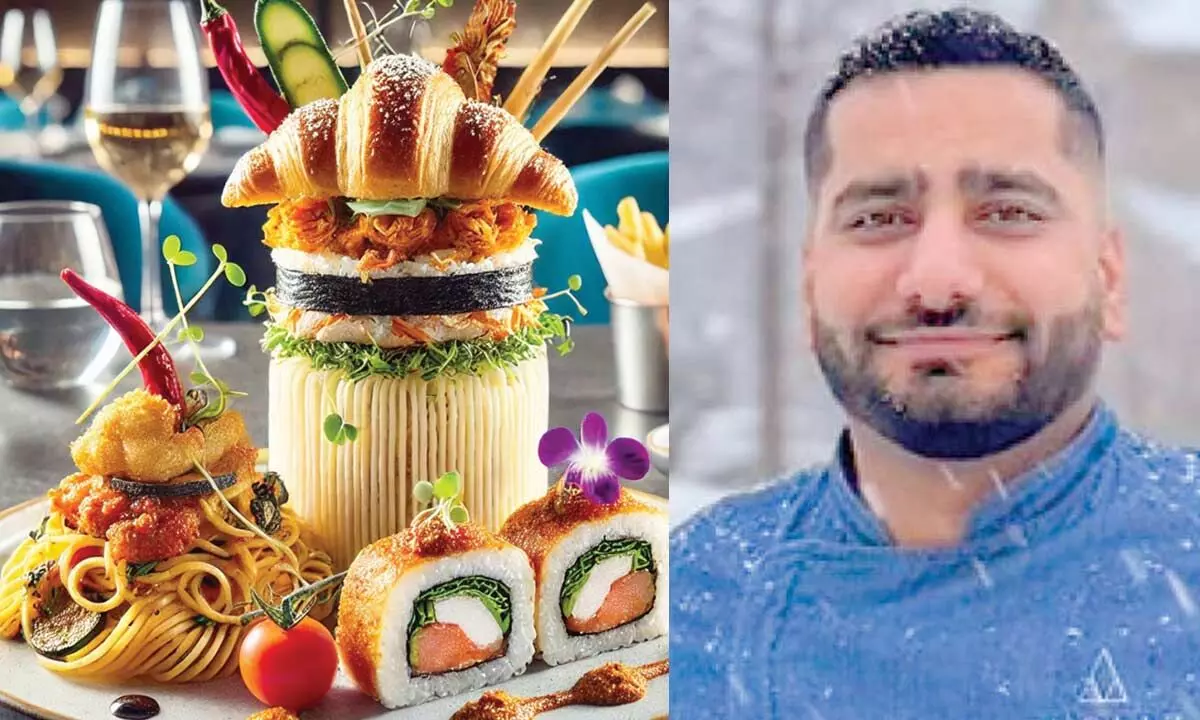Fusion cuisine: When tradition meets modern innovation

Food is more than sustenance; it is an evolving art form that reflects the culture, history, and creativity of those who prepare it. Over time, culinary traditions have been shaped by migration, trade, and globalization, leading to the emergence of fusion cuisine. This innovative approach blends elements from different culinary traditions to create unique and exciting dishes. Fusion cuisine is a testament to human ingenuity, proving that tradition and innovation can coexist harmoniously in the kitchen.
The Evolution of Fusion Cuisine
Fusion cuisine is not a modern concept; it has existed for centuries. The global movement of people and ingredients has long influenced traditional cooking styles. The spice trade, for instance, played a crucial role in merging flavors from the East and West. Dishes like currywurst in Germany (a combination of Indian curry spices and German sausage) and Chifa cuisine in Peru (a blend of Chinese and Peruvian flavors) are early examples of cultural culinary integration.
The contemporary fusion food movement, however, gained popularity in the late 20th century, when chefs began deliberately combining elements from different cuisines to create novel dining experiences. Celebrity chefs such as Wolfgang Puck and Nobu Matsuhisa pioneered this movement, introducing dishes like sushi tacos and miso-infused black cod, which remain popular today.
The Art of Balancing Flavors
Creating successful fusion cuisine requires more than simply mixing ingredients from different regions. A well-executed fusion dish respects the integrity of each cuisine while enhancing flavors in a complementary manner. For example, Korean-Mexican fusion, popularized by the famous Kogi food truck in Los Angeles, masterfully blends the bold, spicy flavors of Korean barbecue with the familiar textures of Mexican street food, resulting in dishes like kimchi quesadillas and bulgogi tacos.
Flavor Profiles: Balancing sweet, salty, sour, and umami elements to ensure harmony.
Textures: Complementing crispy, creamy, and chewy elements to create contrast.
Ingredients: Ensuring that flavors do not overpower one another but rather enhance the dish’s overall taste.
Popular Fusion Cuisine Trends
Asian-Latin Fusion: This includes dishes like sushi burritos, Korean tacos, and tempura-fried plantains. The combination of bold spices, fermented elements, and fresh seafood makes this fusion particularly appealing.
French-Japanese Fusion: The refinement of French cuisine combined with the delicate precision of Japanese cooking results in dishes like matcha-flavored pastries, foie gras sushi, and miso-infused sauces.
Italian-Indian Fusion: Spicy masala pasta and naan pizzas showcase how two strong culinary traditions can be beautifully merged.
American-Southeast Asian Fusion: This trend includes dishes like Thai-inspired burgers with peanut sauce, coconut-infused fried chicken, and Vietnamese pho-inspired ramen.
Challenges in Fusion Cuisine
While fusion cuisine allows for endless creativity, it also presents challenges. One of the biggest risks is the loss of authenticity. Critics argue that some fusion dishes can dilute traditional flavors and cooking techniques, leading to a less genuine culinary experience. Additionally, not all ingredient combinations work well together, and poorly executed fusion dishes can result in a confusing or unappetizing flavor profile.
Another challenge is cultural sensitivity. Some culinary fusions may unintentionally appropriate or commercialize cultural dishes without proper acknowledgment or respect. Ethical considerations should be taken into account when experimenting with traditional cuisines, ensuring that dishes honor their cultural roots rather than exploit them for novelty.
The Future of Fusion Cuisine
As the world becomes more interconnected, fusion cuisine will continue to evolve. With the rise of plant-based eating and sustainable food practices, future fusion dishes may incorporate global vegetarian and vegan traditions. Additionally, advancements in food technology, such as molecular gastronomy, could lead to even more inventive and unexpected culinary creations.
Chefs and home cooks alike will play a key role in shaping the future of fusion cuisine by experimenting with new ingredients, cooking techniques, and cultural inspirations. By striking a balance between tradition and innovation, they can create dishes that celebrate diversity and creativity in the culinary world.
Fusion cuisine is a beautiful reflection of our increasingly globalized world, demonstrating how diverse cultures can come together to create something extraordinary. When executed with thoughtfulness and respect, fusion dishes offer a delightful culinary experience that bridges cultural gaps and introduces diners to new and exciting flavors. As long as food continues to evolve, fusion cuisine will remain a dynamic and influential force in the gastronomic landscape.
(The writer is an Executive Chef at ANDAAZ Restaurant New Jersey)


